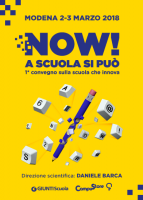
Schools around the world are embracing the idea of authentic hands-on technology-rich projects for students that support all subject areas. Students say these project-based learning (PBL) experiences are powerful and engaging. Teachers agree!
But often there seems to be no time to integrate these experiences into the classroom. Curriculum is overstuffed with facts and assessment tests loom large. How can teachers take the time for “extras” like in-depth projects? When do busy teachers have time to learn about technology that is ever-changing? Several recent trends combine futuristic technology from the maker movement with design thinking – creating experiences that engage and inspire learners in areas that integrate well with curricular expectations.
PBL + Maker
Maker technologies like 3D printing, robotics, wearable computing, programming, and more give students the ability to create real things, rather than simply report about things. They provide onramps to success in STEM and other subjects for students who are non-traditional learners. Students are empowered by mastering difficult things that they care about, and supported by a community that cares about their interests.
These opportunities are not just good because it’s about getting a good grade, but it’s about making the world a better place with technology that is magical and modern. 3D printing is a fantastic learning opportunity because students can work in three dimensions, making geometry and 3D coordinate math come alive. But that’s not all – it’s literally making something out of nothing. It transcends getting the right answer by adding creativity, complexity, and best of all, you get a real thing in the end. For some students, this makes all the difference.
Look for ways to
- Introduce challenges that are open-ended
- Solve real problems (student-designed rather than teacher-assigned)
- Use an iterative design methodology
- Allow time for mistakes and refinement – there should be time for things that don’t work the first time
- Support collaboration with experts in and out of the classroom
Maker mindset
Another aspect of the maker movement is the “maker mindset.” Similar to a growth mindset, this is a personal trait valued by makers world-wide. Like MacGyver, the TV show about a tinkering crime-fighter, the maker mindset is more than just persistence. The maker mindset is about being flexible, thinking on your feet, looking for the unconventional answer, and never, ever giving up.
It’s a mistake to think that you can teach students persistence about tasks they don’t care about. That’s not persistence, that’s compliance. When the classroom is about invention and making real things, persistence becomes personal.
Students who experience success on their own terms can translate that to other experiences. Frustration can be reframed as a needed and welcomed step on the path to the answer. Students who figure things out for themselves need teachers to allow a bit of frustration in the process. In the maker mindset, frustration is a sign that something good is about to happen. It’s also an opportunity to step back and think, ask someone else, or see if there is another path. This may be a role shift for teachers who are used to answering student questions quickly as soon as they hit a small speed bump.
Luckily, with maker technology, it changes so rapidly that no one can be an expert on everything! In fact, this rapid evolution may make it easier to adopt the attitude of “if we don’t know, we can figure it out.” This attitude is not only practical, but models the maker mindset for students.
Adding maker technology and the maker mindset to the well-researched and practiced methods of project-based learning is a winning combination! Maker + PBL = Engaging learning opportunities for modern students and classrooms.
Future of Education Technology Conference Blog (crossposted) Article By FETC 2017 Speaker, Sylvia Martinez
–––––––
 Sylvia Martinez is the co-author of the book often called the “bible” of the classroom maker movement, “Invent To Learn: Making, Tinkering, and Engineering in the Classroom”
Sylvia Martinez is the co-author of the book often called the “bible” of the classroom maker movement, “Invent To Learn: Making, Tinkering, and Engineering in the Classroom”
To learn more about supercharging PBL with maker mindsets and tools at Sylvia’s FETC workshops or sessions click here. (Get a discount on registration!) FETC is in Orlando, Florida in January, 2016.



 ICE 2018
ICE 2018





 Sylvia Martinez is the co-author of the book often called the “bible” of the classroom maker movement, “
Sylvia Martinez is the co-author of the book often called the “bible” of the classroom maker movement, “
